How to Fix VXDIAG Subaru SSM4 Password Don't Match?
Question: Where can I find the 'subaruid.exe' file for the patch? When I try to install VXDIAG VCX SE Subaru SSM4 it says my passwords don't match, and asks me to type in a new one. The videos say to copy the product ID to subaruid.exe file, but I don't have it and it's not in the Subaru patch file posted.
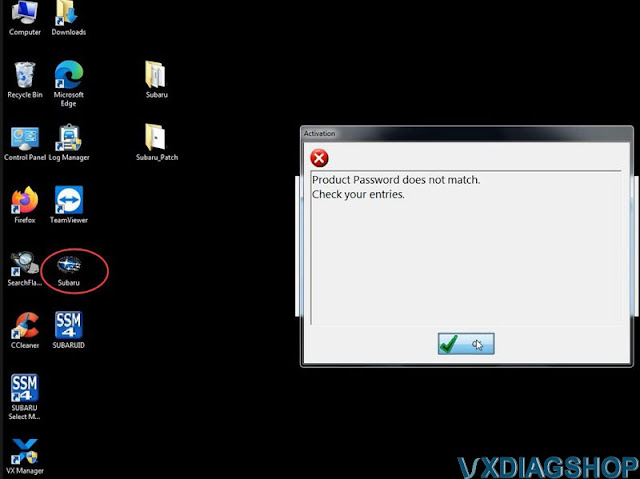
Solution:
Download Subaru patch file here
https://mega.nz/folder/o1sHjK7S#f-SPzsTxU6-ZrEqGmq7ItA
subaruid.exe is included.
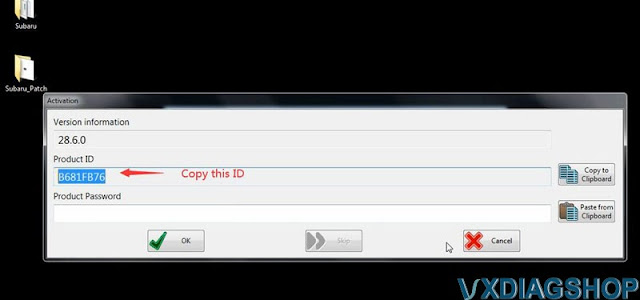
Copy and paste product ID to subaruid.exe
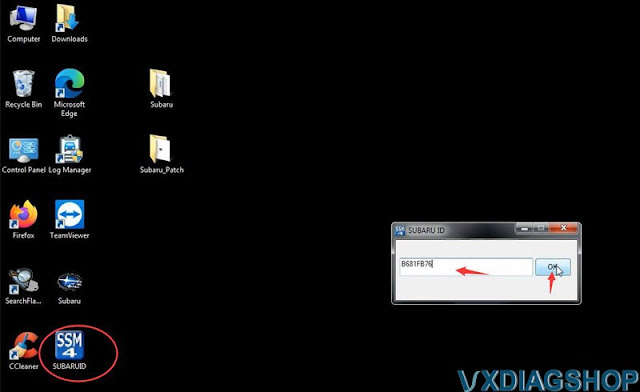
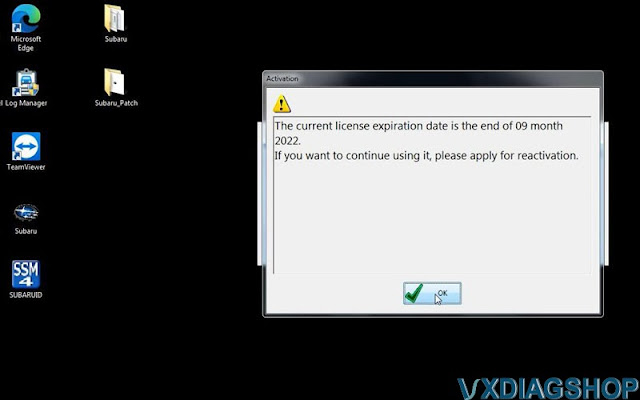
Crack succeeded.
Now Subaru SSM4 software is ready to use.
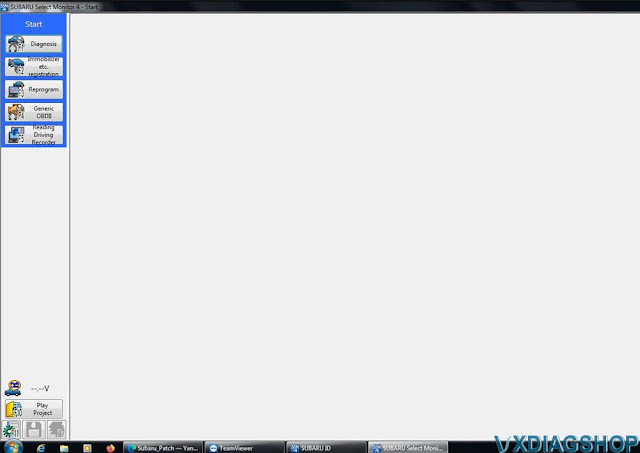
Read also:
Where to Buy VXDIAG Ford Online Account?
To do Ford online module flashing and immobilizer programming with vxdiag vcx nano Ford or VCX SE Ford, you have to access Ford online account.
Ford OEM IDS/FJDS/FDRS online subscription is required in this case. We have customers asking where to get the online subscription. Here’s the clue.
Download and install FDRS software from here. You will need a license to run this software and can be purchased here (2-day FDRS license cost $50)
Download IDS, FJDS, FDRS and purchase online subscription here
https://www.motorcraftservice.com/
| 365 day IDS/FDRS Software License = $900.00 per license |
| 30 day IDS/FDRS Software License = $300.00 per license |
| 2 day IDS/FDRS Software License = $150.00 per license |
| 365 day FJDS/FDRS Software License = $899.00 per license |
| 30 day FJDS/FDRS Software License = $200.00 per license |
| 2 day FJDS/FDRS Software License = $50.00 per license |
Users will get Ford online subscriptions from 3rd party suppliers from forums as well, i.e MHHAUTO.
IDS vs FJDS vs FDRS
Integated Diagnostic Software (IDS)– The factory Ford Motor Company vehicle diagnostic software provides complete dealership level vehicle diagnostic coverage for all 1996 to present Ford, Lincoln and Mercury vehicles. IDS is a flexible diagnostic tool that utilizes standard computing platforms to work with Ford’s VCM, VCM II, VCMM and VMM devices. The IDS software license includes time based access to the IDS software, software udpates and calibration files.
Ford J2534 Diagnostic Software (FJDS)– The factory Ford Motor Company vehicle diagnostic tool designed for use with J2534 compatible Vehicle Communications Interfaces (VCI). FJDS software provides module reprogramming software (FMP) that covers 1996 to present Ford, Lincoln and Mercury module reprogramming functions, plus complete dealership level diagnostic software for all 2018 to present Ford and Lincoln vehicles. FJDS is a flexible diagnostic tool that utilizes standard computing platforms to work with Ford’s VCM II or J2534 compatible devices. The FJDS software license includes time based access to the FJDS software, software updates and calibration files.
Ford Diagnostic & Repair System (FDRS)– The next generation factory Ford Motor Company vehicle diagnostic Software designed for use with VCM II, VCMM and J2534 compatible Vehicle Communications Interfaces (VCI). FDRS provides complete dealership level vehicle diagnostic coverage for some 2018 and forward vehicles. FDRS provides superior capabilities, is more user-friendly and provides more diagnostic tools than IDS. The cloud-based system ensures the technician is provided the latest software every time FDRS logs into the Ford network.
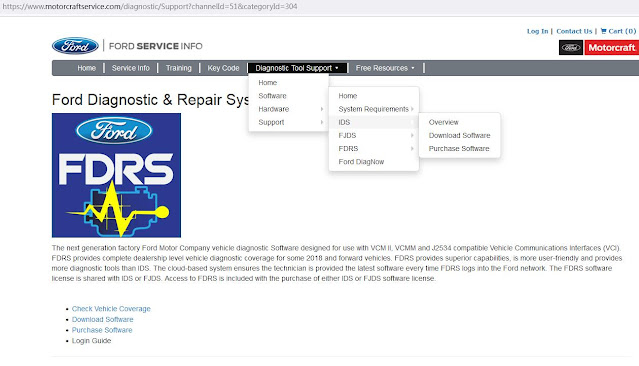
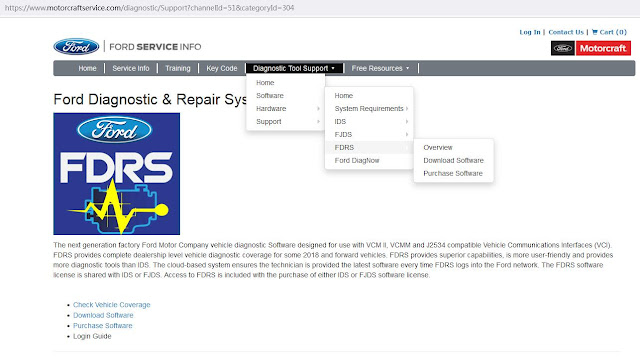
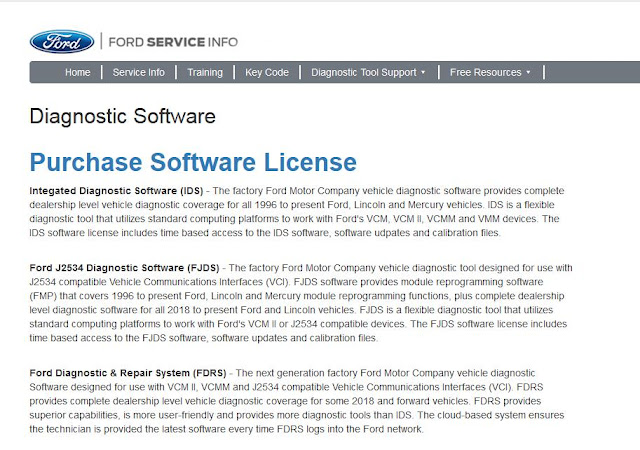
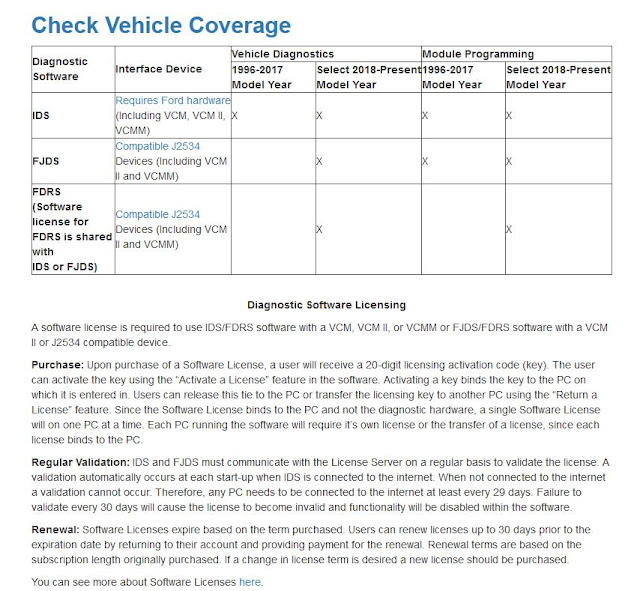

VXDIAG VCX SE 6154 and SVCI 6154 Which is Better?
VW Audi OBD2 diagnostic scanner VXDIAG VCX SE 6154 and SVCI 6154a which is better?
|
Item |
SVCI 6154a |
|
|
|
|
|
|
Software |
ODIS 8.2.0 and up |
ODIS 7.1.1 and ODIS 8.2.0 Optional ODIS 9.1.0 |
|
Car brands |
VW Audi Skoda Bentley Bugatti Lamborghini |
VW Audi Skoda Bentley Bugatti Lamborghini |
|
CAN FD protocol |
Yes |
No |
|
DoIP protocol |
Yes |
Yes |
|
KWP2000 protocol |
Yes |
Yes |
|
UDS protocol |
Yes |
Yes |
|
CAN BUS and K-line |
Yes |
Yes |
|
Compatible with original software |
Unknown |
Yes |
|
Platform/Driver |
SVCI 6154 Device Manager |
VX Manager |
|
Connection |
WiFi, LAN, USB |
WiFi, USB, WLAN, Type C to USB |
|
Remote diagnosis |
Yes |
Yes, Donet license for free |
|
Compatible with ODIS 8.2.0 and above |
Yes |
Yes |
|
Compatible with ODIS Engineer V14 and above |
Yes |
Yes |
|
Support online functions |
Yes, with online account |
Yes, with online account |
|
Firmware update |
Yes, OTA firmware update |
Yes, update online |
|
Software update |
By link |
By link or HDD |
|
J2534 passthru |
Not tested |
Yes, can be used as j2534 passthru for other OEM programs |
|
License |
No, single brand |
Allow to add multi software license to the device, Benz, BMW, Porsche, GM, Ford, Honda, Toyota, Subaru, Volvo etc |
|
Price: |
$169 |
$166 |
In sum:
The advantage of the VXDIAG VCX SE 6154A is it can be configured for BMW, Mercedes, GM and multi brands and can be used as j2534 passthru for multi OEM software. VXDIAG support is better and it supports latest ODIS 9.1.0.
Land Rover L320 06 Configure Ride Control Module by VXDIAG SDD
2006 Land rover Range Rover Sport L320 having issues a suspension fault U0132-87 error which my vxdiag vcx se jlr sdd diagnostic tool reads as "Lost Communication with Ride Level Control Module (RLCM). This is accompanied by the usual orange suspension light and and several other related faults on the scanner.
The Control Module requires to be recalibrated/programmed to the new
component even if its the same model compressor.
New compressor = New
programming no matter what.
The recalibration was not that expensive (with
SDD online subscription).
You need to replace the suspension air compressor and reconfigure the ride module after replacing it.
Configuring a new ride level control module is done with the latest JLR SDD V162 online via VCX SE J2534 passthru device.
Now All the other codes are cleared.
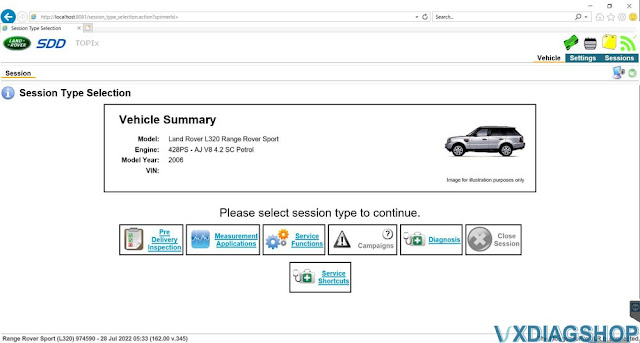
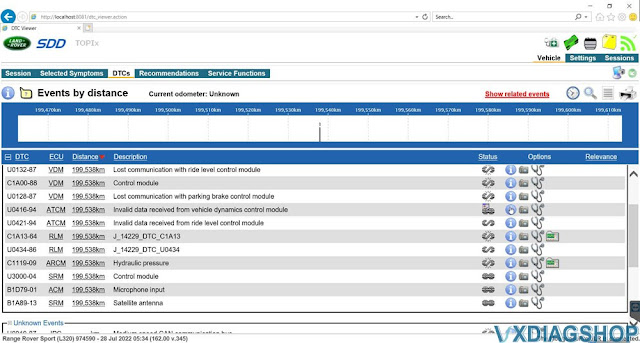

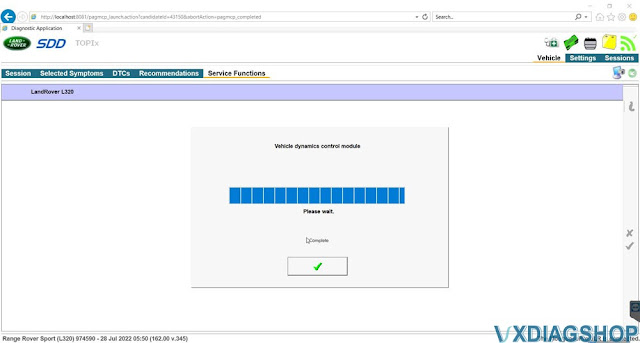

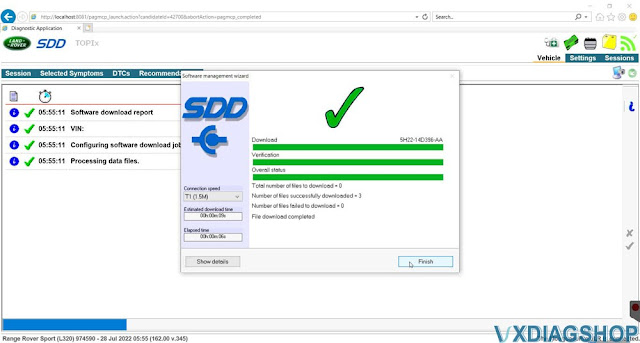

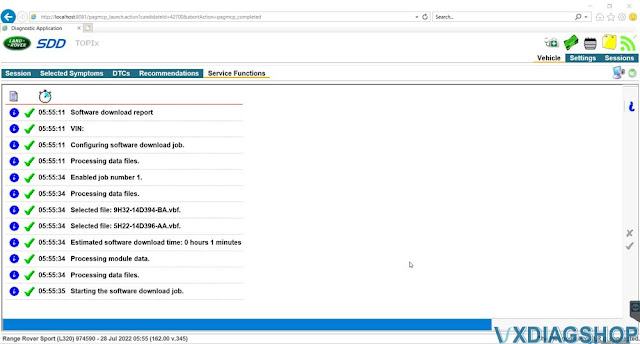
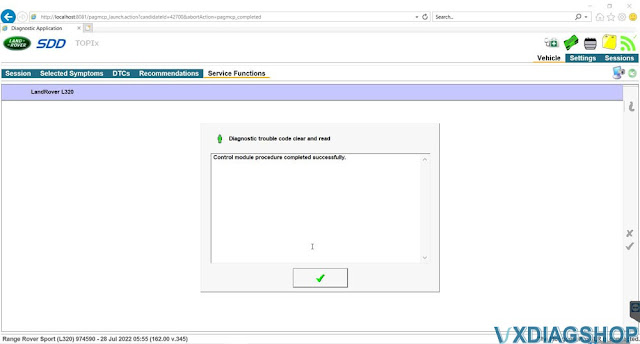
Correct Mustang Speedmeter with VXDIAG & Forscan
Tutorial: How to correct Ford Mustang Speedmeter (if your car is just off from the factory or you've changed tire sizes) with Forscan and VXDIAG J2534 passthru.
What's required:
A laptop running Windows
Free Forscan software with a free extended license
OBD scanner that works with Forscan ((VXDIAG VCX NANO Ford, VCX SE pro or other J2534 passthru))
How does it work?
For 2015-2019 Mustangs, Ford programs the tire size of the car on BCM line 726-12-01 in the second four-digit block of hex. For 2020+ Mustangs, it's split between 726-15-01 and 726-15-02 as described below. It's stored as the nominal circumference of the driven wheel in millimeters with a revs/mile conversion factor of 96.7%. To save you the trouble of doing a bunch of math and conversions between decimal and hexadecimal, I've come up with a hex calculator that you can use here: click here
This is covered in the spreadsheet, but for example my 2017 GT PP currently has this in the BCM as-built:
726-12-01 xxxx 0858 xxxx
If I changed my rear tires to 305/35R19's, my calculated value is this:
726-12-01 xxxx 0843 xxxx
The x's mean to leave whatever value is already there.
2015-2019 Mustangs share the 726-12-01 address. For 2020+ Mustangs, the location has changed to this:
726-15-01 xxxx xxxx ABxx
726-15-02 CDxx xxxx
xxxx
ABCD = your calculated value. It's split between the two addresses for 2020+ cars.
You also have two options here. You can simply enter the size of your current rear tires as in my example above, and using the nominal diameter of that tire size the calculator will give you a hex value you can program to get pretty close (maybe even dead on) with the speedometer. Tire manufacturers vary of course, and your car's speedometer may be a little weird. So below the tire size calculator is a truing calculator that relies on a precise measurement from GPS.
As stated in the calculator, I recommend that you use a GPS that can output in tenths of a mile per hour, that you set the cruise on level ground as high as reasonable (eg 75mph) and that you use the needle rather than the digital speedo or digital cruise setting to set your speed, since the digital outputs are rounded to the nearest whole MPH. That is to say, you might see that the car is set to 75mph, but internally the car could be set to 74.5 or 75.4, and you'd never know because it's rounded before it's shown to you. Here is an example screen showing tenths of a MPH from a Garmin on the satellite info page (press and hold on the satellite reception strength bars in the upper left corner to get to this page.)
Try to set the needle exactly on one of the MPH hash marks on your speedometer for best results. Move your head to the right to eliminate parallax error at that speed, see the below video.
FWIW, if you have other Ford vehicles this seems to work on them as well. I've personally confirmed that it works on F150s so if you've got a giant bro-dozer with 35″ tires, it's time to fix that speedometer!
I have a DTC now.
You WILL get a non-MIL DTC P160A (Control Module Vehicle Options Reconfiguration Error) when you change this in the PCM.

Thanks to the FORScan devs and some beta testing adventurers, we are able to reliably remove this DTC now using a new feature.
This new feature is only available in FORScan 2.3.11 or higher.
What you want to do is go into the computer-chip-looking tab in FORScan where you normally edit as-built. At the top, you'll see a new function for the PCM – "Module initialization/relearn vehicle data" – see this screen shot:
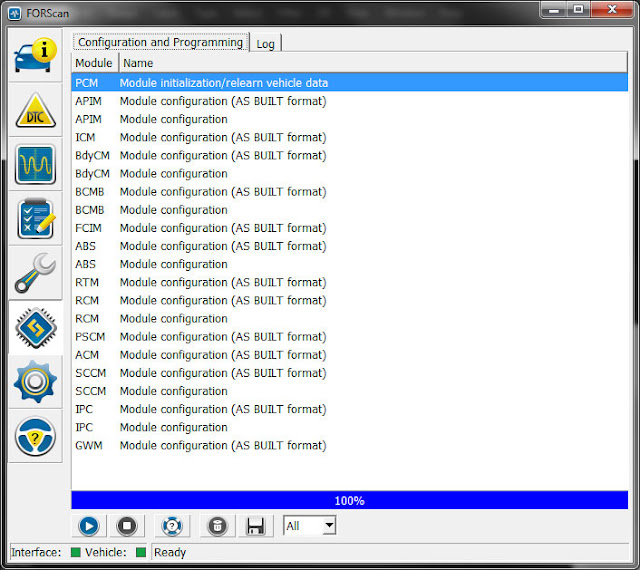
Highlight that function and hit the play button, and follow the onscreen instructions to the letter.
Once it's finished, rescan for DTC's and remove the P160A DTC. Go drive around and scan for DTC's again. You should be in the clear.
Note that if you ever wish to return to stock, you'll have to run this procedure again after setting the as-built values for the tire size back to stock.
What should I do if I haven't changed my tires but my speedometer doesn't match my cruise setting? The speedo reads fast!
I feel this needs to be addressed, because people don't seem to believe it.
There is a *large* amount of parallax error in these cars when the needle is pointed up, which it is when you're at highway speeds of around 70-80. At those speeds your speedometer will appear to read 2-3mph faster than your cruise setting.
Why? The needle is thick and spaced out from the gauge face, so the perceived "needle" (the illuminated red center section) will give a great deal of parallax error unless you're viewing perfectly perpendicular to the needle.
Unfortunately, the designers chose to put the speedometer in such a position that reading the speedo with your head perfectly perpendicular to the needle means moving your head WAY right, far away from any natural position in the car.